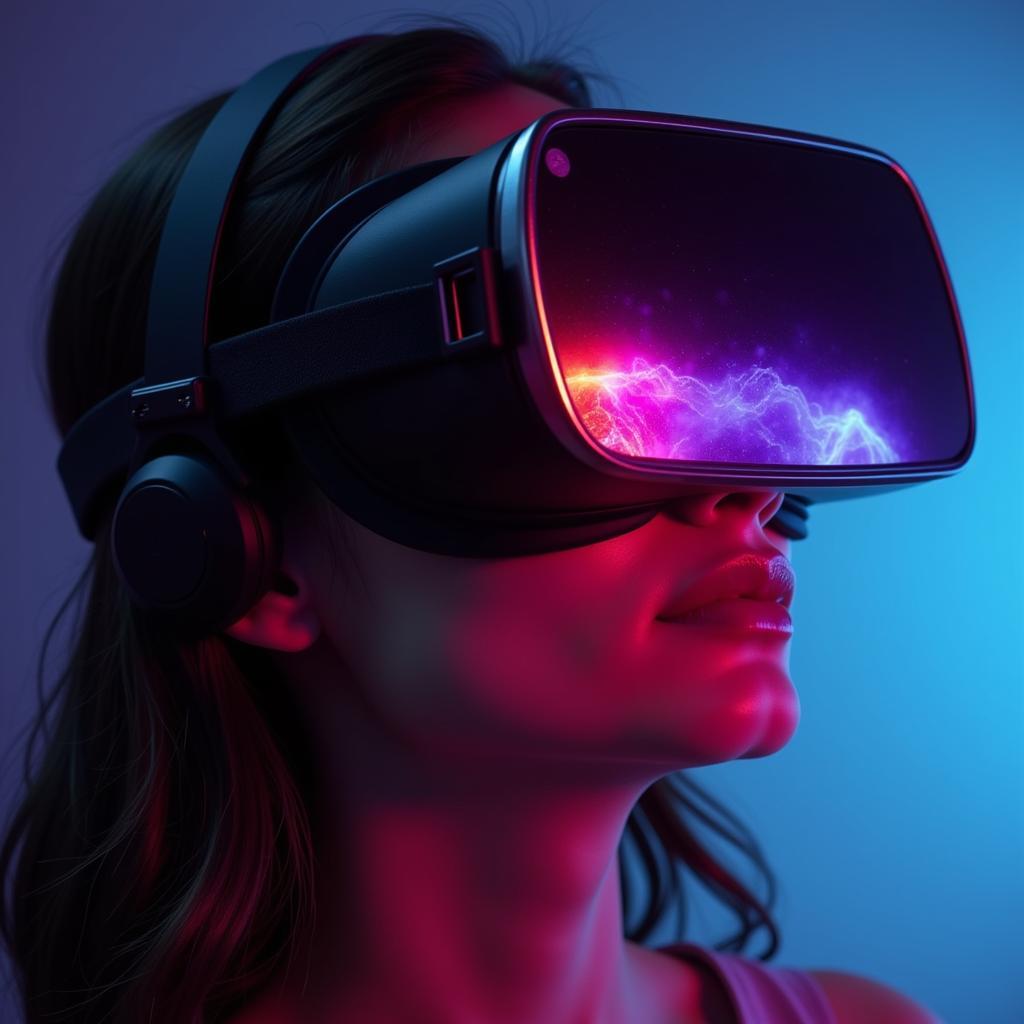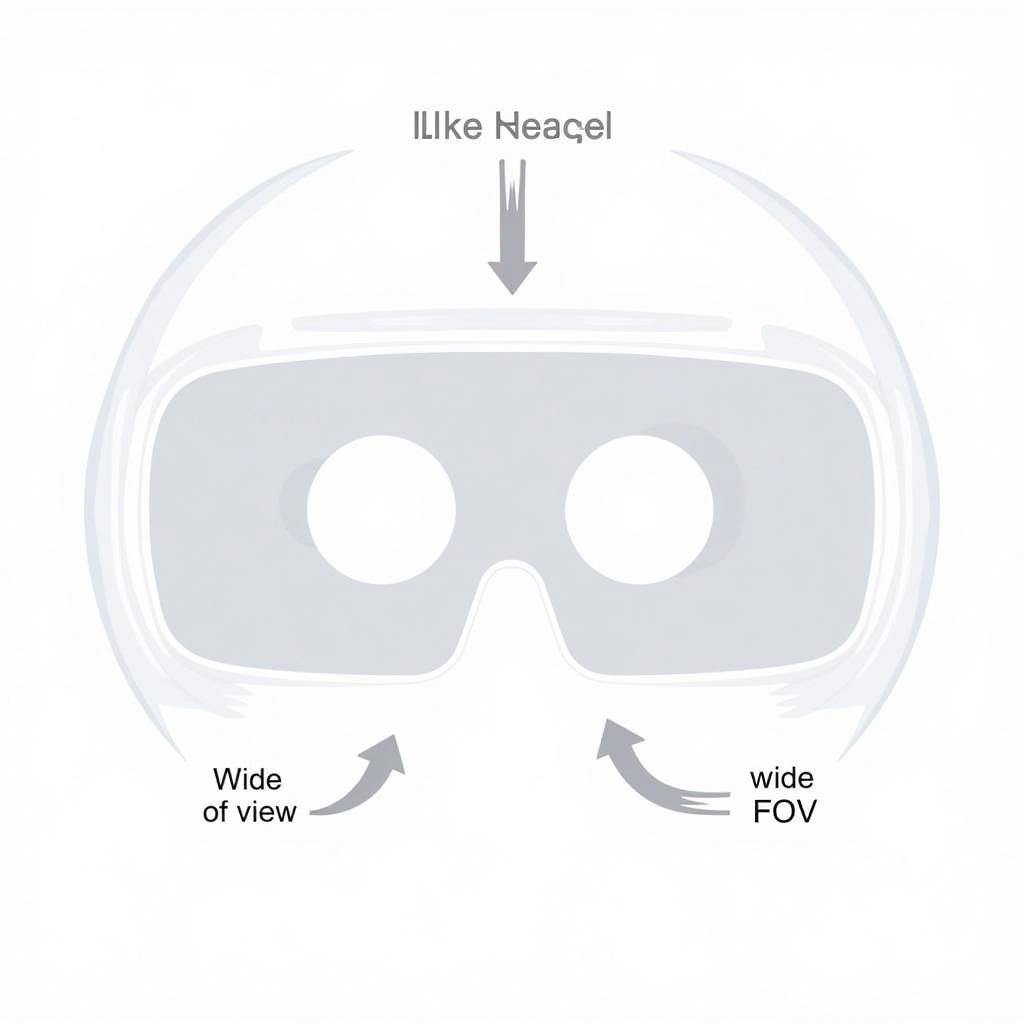Stepping into the world of virtual reality is an incredible experience, and a crucial aspect of that immersion lies in the display technology used. The display acts as your window to the virtual world, directly impacting the visual fidelity and overall sense of presence. Choosing the right display for your VR setup can significantly enhance your experience, making it feel more believable and engaging.
This comprehensive guide delves into the intricacies of displays for VR, covering everything from different types and technologies to factors influencing image quality and the future of VR displays.
Understanding the Importance of Displays in VR
Imagine exploring a dense jungle in VR; the lush foliage, the intricate details of the environment, and the exotic creatures all come to life before your eyes. A high-quality display can transport you to this world, making you feel like you’re truly there.
Displays in VR headsets are responsible for presenting the stereoscopic 3D images that create the illusion of depth and immersion. They play a crucial role in:
- Image Quality: Higher resolution displays offer sharper images with finer details, reducing the screen-door effect (visible pixels) and enhancing realism.
- Field of View (FOV): A wider FOV provides a more immersive experience, allowing you to perceive a larger portion of the virtual environment at once.
- Refresh Rate: Higher refresh rates result in smoother motion and reduce motion blur, minimizing potential discomfort or motion sickness.
- Latency: Low latency ensures that the virtual world responds instantly to your head movements, further enhancing the feeling of presence.
Exploring the Different Types of VR Displays
VR displays have evolved significantly over the years, with different technologies offering varying levels of immersion and performance. Let’s explore the most prevalent types:
LCD Displays
LCD (Liquid Crystal Display) panels are commonly found in less expensive VR headsets. They work by passing light through a layer of liquid crystals, which are controlled by electrical signals to create the desired images. While LCD displays offer decent image quality, they often suffer from slower response times, potentially leading to motion blur.
OLED Displays
OLED (Organic Light-Emitting Diode) displays are known for their superior image quality and faster response times. Each pixel in an OLED display emits its own light, resulting in deeper blacks, higher contrast ratios, and more vibrant colors. OLED panels also tend to be more energy-efficient, making them suitable for mobile VR headsets.
 OLED VR Display
OLED VR Display
MicroLED Displays
Emerging as a promising display technology for VR, MicroLED combines the benefits of OLED with improved brightness and energy efficiency. MicroLED displays use microscopic LEDs as individual pixels, offering exceptional contrast, color accuracy, and potential for incredibly high resolutions.
Fast-Switching LCD Displays
Addressing the limitations of traditional LCD panels, fast-switching LCDs offer significantly improved response times, reducing motion blur and enhancing the overall visual experience. These displays achieve faster switching speeds by using a different type of liquid crystal material and optimized driving electronics.
Key Factors Influencing VR Display Quality
Choosing the right VR display involves considering several critical factors:
Resolution and Pixel Density
Resolution refers to the number of pixels displayed on the screen, directly impacting the sharpness and clarity of the image. Higher resolutions result in a finer image, reducing the screen-door effect and enhancing overall realism. Pixel density, measured in pixels per inch (PPI), also plays a crucial role in perceived image quality.
Refresh Rate and Motion Blur
The refresh rate, measured in Hertz (Hz), determines how often the display updates the image per second. A higher refresh rate results in smoother motion and reduces motion blur, particularly important for fast-paced VR experiences.
Field of View (FOV)
The FOV refers to the extent of the virtual world you can see at any given time. A wider FOV provides a more immersive experience, similar to having a wider field of vision in real life.
Latency
Latency, also known as lag, refers to the delay between your head movement and the corresponding update in the displayed image. Low latency is crucial for minimizing motion sickness and maintaining a comfortable VR experience.
 VR Headset Field of View
VR Headset Field of View
The Future of Displays for VR
The field of VR display technology is constantly evolving, with exciting advancements on the horizon:
- Higher Resolutions and Refresh Rates: We can expect to see VR displays with even higher resolutions and refresh rates, pushing the boundaries of visual fidelity and immersion.
- Improved FOV and Optics: Research and development efforts are focused on achieving wider FOVs and more compact optics, further enhancing the sense of presence.
- Foveated Rendering: This technique leverages eye-tracking technology to render the area you’re looking at in higher detail, optimizing processing power and potentially leading to even more realistic visuals.
Conclusion
Choosing the right display is paramount to unlocking the full potential of virtual reality. By understanding the different display technologies, key factors influencing image quality, and emerging trends, you can make an informed decision that aligns with your VR needs and budget.
For further information on enhancing your VR experience, explore our resources on virtual desktop with link cable and mac yellow screen of death.
Need assistance with your VR setup or have questions about display technologies? Our team of experts is available 24/7 to provide personalized support. Contact us at 0902476650, email us at [email protected], or visit our address at 139 Đ. Võ Văn Kiệt, Hoà Long, Bà Rịa, Bà Rịa – Vũng Tàu, Việt Nam.





